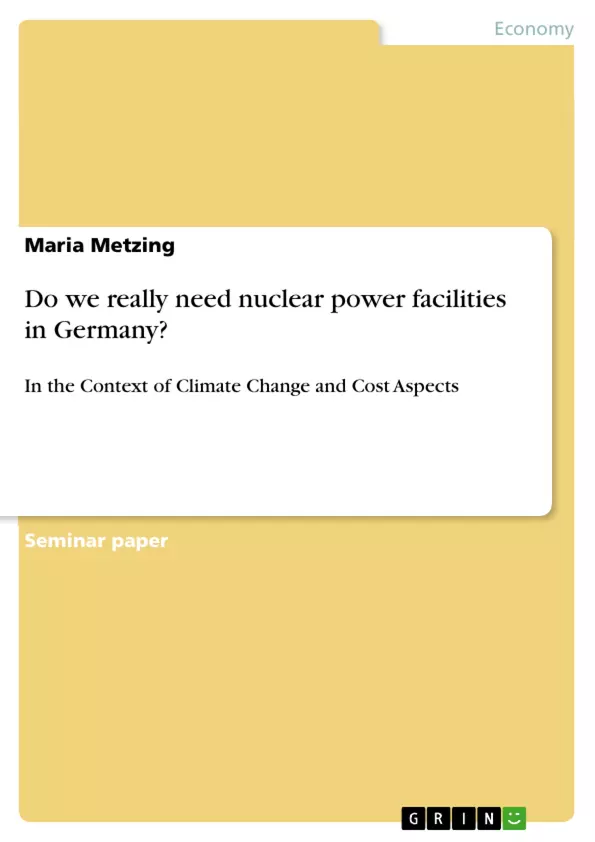This paper analyses whether nuclear power is needed in Germany. To reach the aims of the Kyoto Protocol, Germany has to reduce the CO2 emissions. In spite of different results in the presented studies, this paper shows that nuclear power can help in reducing the climate problem in the short run. In addition to reach the aims of the Kyoto Protocol, competitive prices of nuclear power have also to be fulfilled. In the second part of this paper, the costs of nuclear power are discussed. Additionally, external costs and risks of nuclear power are discussed as well. This paper reveals that high uncertainties exist about the risk assessment of nuclear power and the availability of suitable data in this context is limited. Overall, the low CO2 emission of nuclear power and the risk of high external costs result in the finding that nuclear power can be an expensive energy source for solving the global warming problem.
Inhaltsverzeichnis (Table of Contents)
- Introduction
- Can Nuclear Power Help Reduce CO2 Emissions?
- Lifecycle of Nuclear Energy
- Nuclear Power as an Alternative for Reducing CO2 Emissions
- Nuclear Power versus Increasing Energy Efficiency
- Nuclear Power versus Fossil Fuels Intensive Energy Forms
- Costs of Nuclear Power
- The Average Costs of Producing Energy
- Historic and Actual Hints for Higher Costs of Nuclear Power
- External Costs and Risk
- External Costs of Nuclear Power in Germany
- Hints for Higher Risks of Nuclear Power
- Conclusion
Zielsetzung und Themenschwerpunkte (Objectives and Key Themes)
This paper investigates the necessity of nuclear power in Germany, considering climate change and cost implications. It aims to analyze whether nuclear power offers a viable solution for reducing CO2 emissions and achieving Kyoto Protocol goals while maintaining competitive energy prices. The analysis considers both the environmental benefits and the economic costs, including external factors and risks.
- The role of nuclear power in reducing CO2 emissions in Germany.
- A cost-benefit analysis of nuclear power, encompassing average production costs and external costs.
- Assessment of the risks associated with nuclear power.
- Evaluation of nuclear power as a solution to climate change in the context of German policy.
- Comparison of nuclear power with alternative energy sources.
Zusammenfassung der Kapitel (Chapter Summaries)
The Introduction establishes the context of the German nuclear phase-out and the debate surrounding nuclear power's role in climate change mitigation. It outlines the paper's focus on greenhouse gas emissions and cost-effectiveness.
The chapter on Can Nuclear Power Help Reduce CO2 Emissions? explores the lifecycle of nuclear energy and compares it to other energy sources in terms of CO2 emissions. It examines the potential of nuclear power as an alternative for reducing CO2 emissions, considering energy efficiency and fossil fuel alternatives.
The section on Costs of Nuclear Power delves into the average costs of producing nuclear energy and investigates historical and present indications of higher costs. It addresses external costs and risks associated with nuclear power, including those specific to Germany.
Schlüsselwörter (Keywords)
Nuclear power, CO2 emissions, climate change, Germany, Kyoto Protocol, energy costs, risk assessment, external costs, energy efficiency, fossil fuels.
- Quote paper
- Maria Metzing (Author), 2011, Do we really need nuclear power facilities in Germany?, Munich, GRIN Verlag, https://www.grin.com/document/182858



